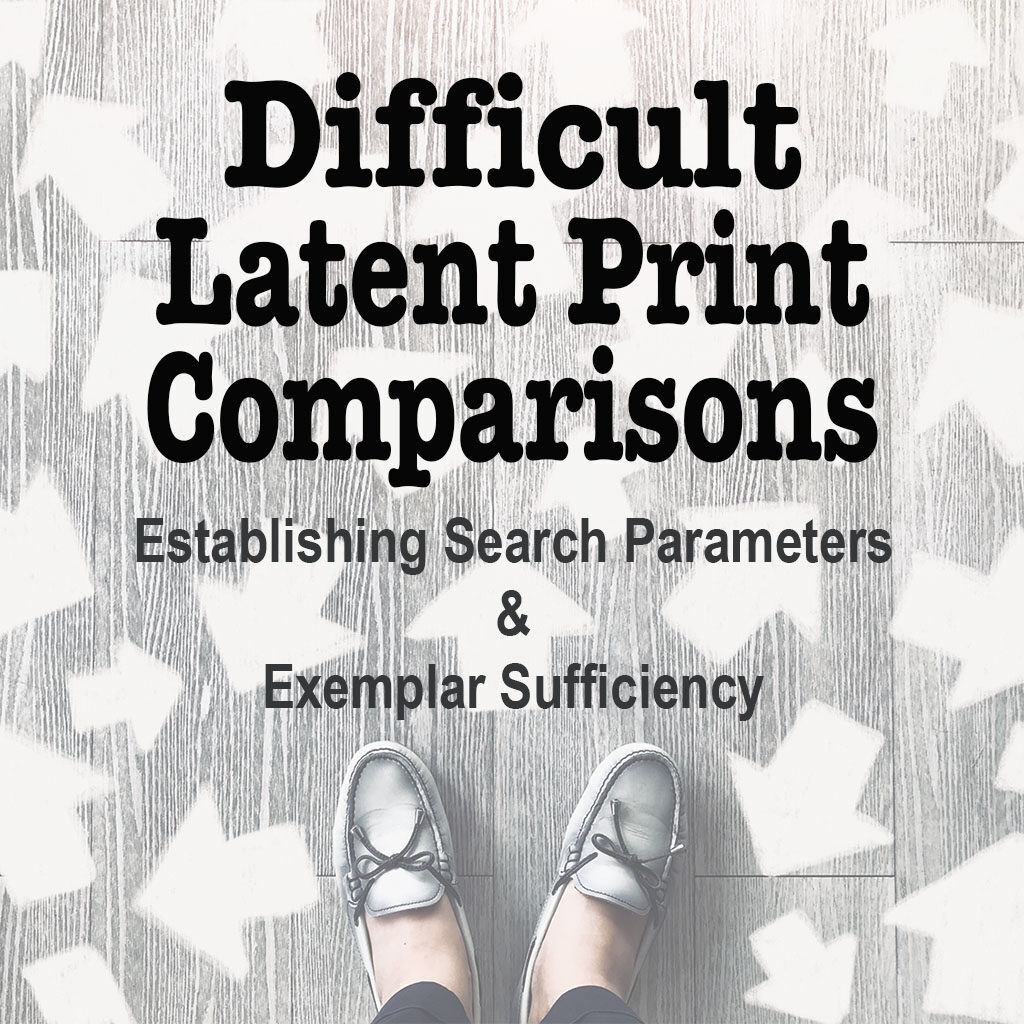
Please note Alice has re-engineered her in-person classes, blending related topics at the core of friction ridge examinations: 1) distortion and identifications, 2) comparisons and exclusions, and 3) academics and testimony. This course focuses on #2 – comparisons and exclusions.
This course is 4 1/2 days (36 hours) and priced at $650 per student in the United States and Canada (rate will be be adjusted to accommodate taxes or international travel, if applicable). This class is approved by the IAI for 36 training hours toward Latent Print and Tenprint Certification. To host a class, please contact Alice White via email: Alice@EvolveForensics.com
Host agencies receive a 10% registration discount.
An examiner who exhibits high accuracy assigning search parameters is expected to be more efficient in the searching process because the examiner can quickly narrow down the possible donor areas that must be compared. Highly skilled examiners are also expected to recognize when the macroscopic features are uninformative (e.g., when the shape of an impression is dictated by the surface rather than the hand), ambiguous (i.e., impression that must be searched in multiple regions, right and left hands and feet, or multiple orientations), or conflicting (e.g., ridge flow/patterning indicates one orientation, but the creases indicate another). The ability to effectively assign search parameters is inherently linked to exclusion decisions. If a latent print cannot be reasonably assigned to a given anatomical region, then complete friction ridge exemplars of all the friction ridge skin should be requested and multiple anatomical regions and orientations compared before reporting that the friction ridge impression was excluded from a particular subject.
This 4 ½ day workshop will introduce all regions of the friction ridge skin with a focus on the similarities and differences in shape, size, creases, patterns, deltas, ridge flows, ridge counts, ridge lengths, ridge thicknesses, and ridge curvature. Building robust regional mental models should increase comparison efficiency via faster recognition of the various parts of the hands and feet and decreases risk of error by recognizing the appropriate conditions to widen search parameters (check other regions of the skin or alternative orientations). A thorough understanding of the skin will also permit better assessment of the completeness of exemplar prints – has every region I need for this comparison been recorded in the exemplars? Comparison exercises (tips/edges of finger, lower phalanges of fingers, and palms) will promote the recognition of ambiguity in diagnostic search information and incomplete exemplars, emphasizing appropriate inconclusive and exclusion decisions. We will also discuss the benefits and limitations of written procedures that may help facilitate the decision-making process.
